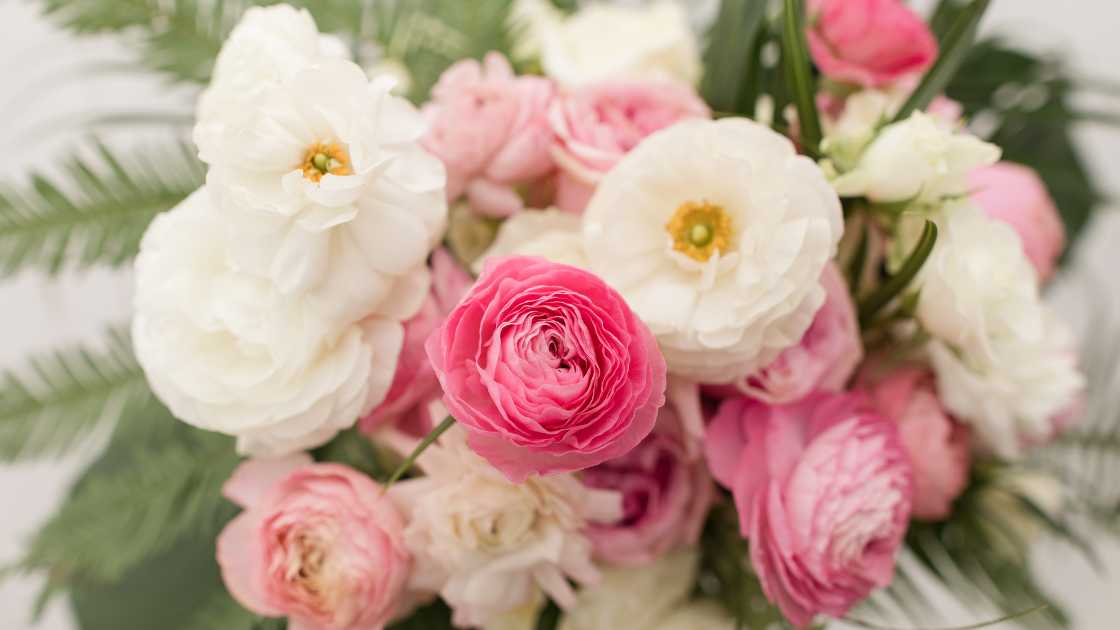How to Dry a Wedding Bouquet: Preserve Your Memories

Your wedding bouquet is not just a beautiful arrangement of flowers; it’s a symbol of love, celebration, and cherished memories. After your big day, you may want to preserve this special keepsake. Drying your wedding bouquet is an excellent way to do just that. In this guide, we’ll walk you through the step-by-step process of how to dry a wedding bouquet so that you can enjoy its beauty for years to come.
There are 5 Steps to Drying a Wedding Bouquet
Choose the Right Time to Dry Your Bouquet
Timing is crucial when it comes to drying your wedding bouquet. You’ll want to start the process within a day or two after your wedding to ensure the flowers are still fresh. Waiting too long may result in wilted and damaged petals that won’t hold up well during the drying process.
Select the Ideal Drying Method
There are several methods to dry a wedding bouquet, and the one you choose depends on your preferences and the type of flowers in your bouquet. Here are three common drying methods:
Air Drying:
This method is suitable for bouquets with sturdy flowers like roses, lavender, or baby’s breath. Simply tie the bouquet with a string and hang it upside down in a dry, dark, and well-ventilated area for about two to three weeks. The flowers will gradually dehydrate and maintain their shape.
Silica Gel Drying:
Silica gel is a moisture-absorbing substance that can be used to dry delicate or intricate flowers such as orchids or peonies. Place your bouquet in a container filled with silica gel, ensuring that the flowers are completely covered. Seal the container and leave it undisturbed for about a week.
Pressing:
Pressing is an excellent option for preserving small, flat flowers like pansies or daisies. Place your flowers between sheets of blotting paper or parchment paper, and then press them between the pages of a heavy book. Leave the book in a cool, dry place for several weeks until the flowers are completely dried.
Prepare Your Bouquet
Before starting the drying process, trim the stems of your bouquet to your desired length. Remove any excess foliage or leaves that could cause mold or decay during drying. Make sure the bouquet is clean and free from dirt or pests.
Monitor the Drying Process
While your bouquet is drying, check it regularly to ensure that everything is progressing as expected. Make any necessary adjustments, such as removing wilted or damaged flowers, and ensure the drying environment remains dry and well-ventilated.
Seal and Display Your Dried Bouquet
Once your wedding bouquet is completely dried and ready to be preserved, you can take a few additional steps:
Spray with Hairspray or Floral Sealant:
To protect the dried flowers from dust and damage, you can lightly spray them with hairspray or a floral sealant. This will help maintain their color and shape.
Frame or Display:
Consider framing your dried bouquet in a shadow box or a decorative frame. You can also create a unique piece of artwork by arranging the dried flowers in a vase or shadow box, adding a photo or other mementos from your wedding.
FAQs
How long does it take to dry a wedding bouquet using the air drying method?
The time it takes to dry a wedding bouquet using the air drying method typically varies based on factors like the type of flowers, humidity levels, and the size of the bouquet. On average, it takes approximately two to three weeks for most bouquets to fully dry. Sturdy flowers like roses and baby’s breath tend to dry faster, while more delicate blooms may take a bit longer. It’s important to regularly monitor the bouquet during the drying process and ensure it is kept in a dry, dark, and well-ventilated area for the best results.
Can I use any type of silica gel for drying my wedding bouquet?
Yes, you can use silica gel to dry your wedding bouquet, but it’s important to use a specific type known as “flower drying silica gel.” This type of silica gel is designed for preserving the color and shape of flowers. Be sure to choose a brand that is safe for use with flowers and follow the manufacturer’s instructions. You can find flower drying silica gel at craft stores or online. Regular silica gel used for other purposes, such as drying electronics or absorbing moisture, is not suitable for preserving flowers as it may contain additives that could affect the appearance of the flowers.
Can I dry a wedding bouquet that contains both fresh and silk flowers?
Drying a bouquet that contains both fresh and silk flowers can be challenging because the drying methods for these two types of flowers differ. Fresh flowers can be air-dried, silica gel-dried, or pressed, as mentioned earlier. However, silk flowers should not be subjected to these drying methods as they can become damaged or discolored. Instead, if you want to preserve a bouquet with silk flowers, consider carefully removing and storing the silk flowers separately before using the appropriate drying method for the fresh flowers. This way, you can maintain the appearance and quality of both types of blooms.
Conclusion
Drying your wedding bouquet is a beautiful way to hold onto the memories of your special day. By choosing the right drying method, preparing your bouquet carefully, and monitoring the process, you can successfully preserve the beauty of your wedding flowers for years to come. Whether you choose to frame your dried bouquet or display it in another creative way, your preserved flowers will serve as a lasting reminder of your love and commitment.





